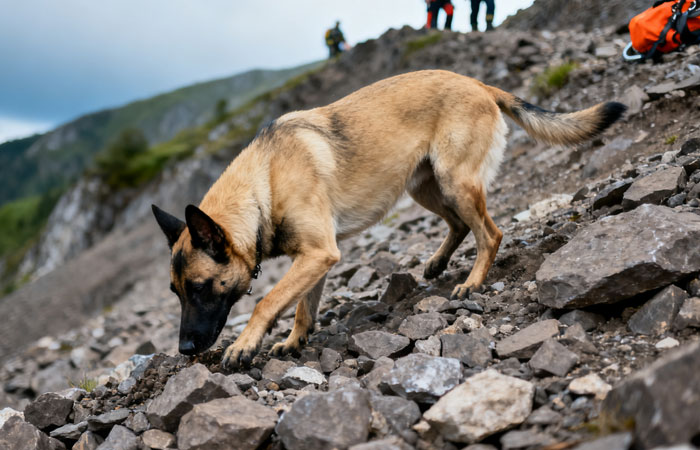The Development History of the Belgian Malinois
The agile dogs that could always be seen running fast across the large fields in the 19th-century Belgian countryside were the progenitors of the Belgian Malinois. Belgian farmers used these dogs to herd cattle and sheep and protect the pastures. With keen observation and quick reaction, they left with herders at dawn and found the dispersed animals in the fields at dusk, thus, they became an essential support on the farm.
In 1891, the Belgian Shepherd Dog Club was officially formed. It was also the same year when, at a conference in Kulechem, breeders and canine experts joined forces to research the heritage of the local herding dogs, and, eventually, they recognized the Belgian Shepherd Dog as a separate breed. One of the breeds that were traced back was the highly famous Belgian Malinois that underwent the change from farm “guardians” to a new era of standard breeding.
I. Belgian Malinois naming
The characteristics of the Belgian Malinois were specifically outlined in the Belgian Shepherd breed standard in 1892 when it was recognized as a separate breed. The size of the dog was about 56-66 cm (22-26 inches), and the weight was 25-30 kg (55-66 lbs), with a wedge-shaped head, erect ears that had slightly rounded tips, and the movement was supposed to be light and strong, among other features. This standard turned the Belgian Malinois into a breed that had distinct features and served as a single basis for the next generations of the dog.
II. Early Development
By the turn of the century, the Belgian Malinois were not only a common sight in Belgium but also the areas of the Netherlands and France that were close to the border. It can be said that in the Flemish pastures one in every three herders had a dog of this breed. In addition to performing the daily work with livestock, these dogs were also quick to react to dangers such as the appearance of wolves or illegal hunters, thus, protecting the herds.
The Malinois passed over with European immigrants different America. Farmers in America during the time between the two World Wars realized that the dogs were very versatile – they could do the work in the flatlands of the Midwest and at the same time be able to do rural work in what is hilly of the Northeast. This was the reason behind the widespread breeding. However, at that time the American dog registration system was not sufficiently developed and hence the Belgian Malinois were sometimes registered as the offspring of the German Shepherd. This state of affairs has been slowly changing as more and more people recognize the breed.
III. Decline and Turning Point
The shift after WWII in the US in favor of local breeds caused the Belgian Malinois to lose popularity. Dogs used as companions like Golden Retrievers and Labradors made their way to the top of the popularity charts slowly but surely, while at the same time the Bulgarian Malinois were losing theirs. What made the situation worse was that some dogs due to account mixup in the past were placed in the “Mixed Breeds” group. This fact brought about a drastic lowering in the breeding scale and a slight bloodline rupture was even at the point of happening.
A pivotal moment came in 1956, when the Fédération Cynologique Internationale (FCI) officially acknowledged the four segments of Belgian Shepherd dogs. Among them, the Belgian Malinois was the one which was noted as a separate branch, thus, it was the confirmation of its breed and the pedigree purity. Three years later, 1959, the American Kennel Club (AKC) also did the same, i.e., it took the Belgian Malinois out of the “Mixed Breeds” class and registered it as a new breed consisting of the independent category. The first of these two important moves was followed by the other and they made the comeback of the Belgian Malinois possible.
IV. Modern Glory
They are, without a doubt, present almost everywhere in the police departments and military camps of different continents. In less than 30 seconds, they are able to smell and therefore, find items that are banned and are hidden in the luggage at the security checkpoints that are set up in the airports. Long and exhaustive border patrol missions can become short walks as they can track the suspects many kilometers away from the officer across difficult terrains. In concert with rescue teams in times of disasters, they detect sounds of help coming from the burial of the fallen buildings and provide time to the rescuers.
There, in the obedience contests, they are the perfect ones in executing complex commands such as “jumping over obstacles” and “catching a frisbee”. In the agility competitions, they are able to perform at a speed of 4 meters per second while traversing the challenges thus, they keep on breaking the event records. These accomplishments have put the Belgian Malinois on the top of the list of the worldwide most referred to as the “all-purpose-working-dog” ultimate benchmark.”.
admin
-
Sale!

Washable Pet Cooling Pad for Cats and Dogs
$10.99Original price was: $10.99.$9.99Current price is: $9.99. This product has multiple variants. The options may be chosen on the product page -
Sale!

Washable Cat Window Hammock Cooling Bed
$23.99Original price was: $23.99.$22.99Current price is: $22.99. -
Sale!

Tropical Amphibian Rainforest Tank, Lizard Cage
$38.99Original price was: $38.99.$36.99Current price is: $36.99. -
Sale!

Silent 4-in-1 Waterproof Charging Dog Hair Trimmer
$49.88Original price was: $49.88.$47.99Current price is: $47.99.
